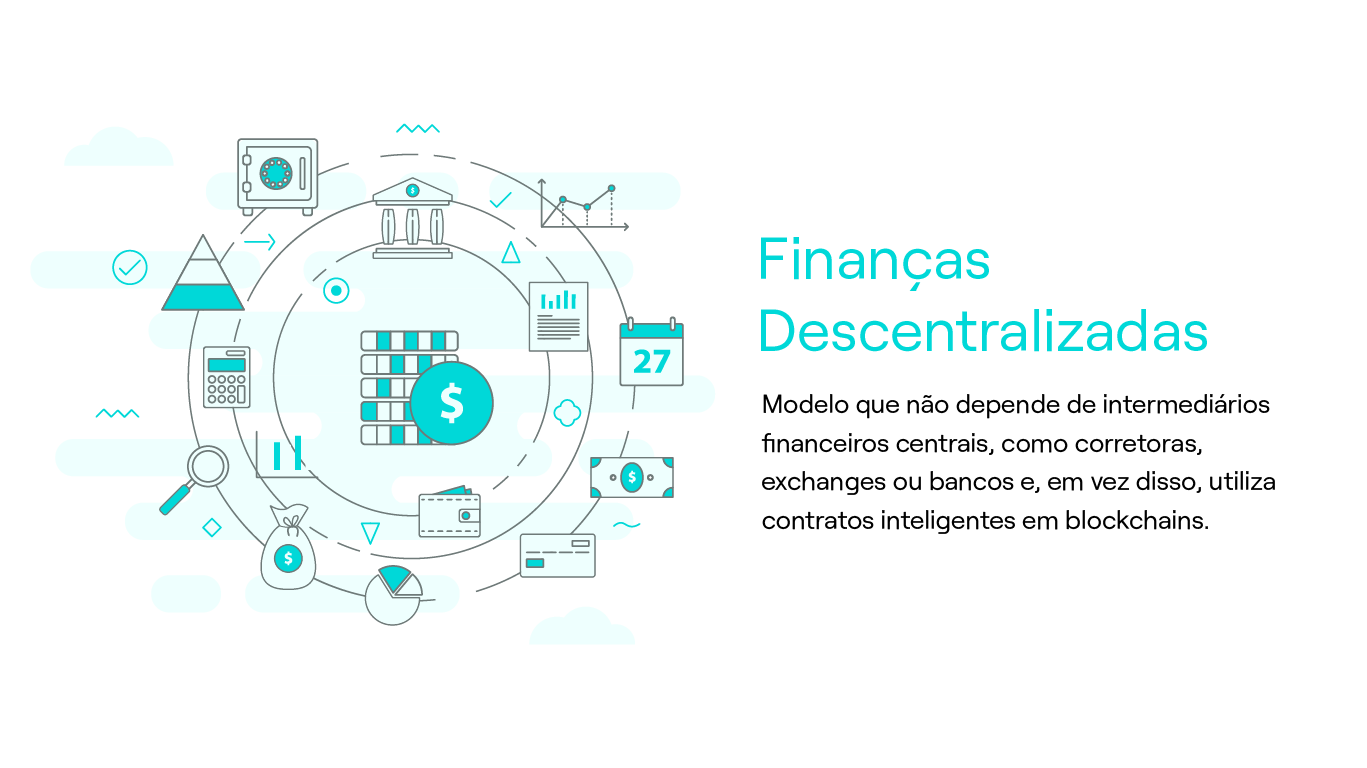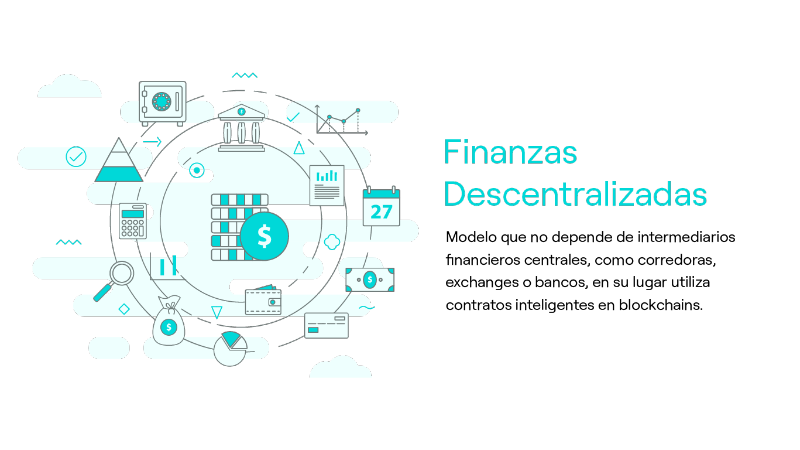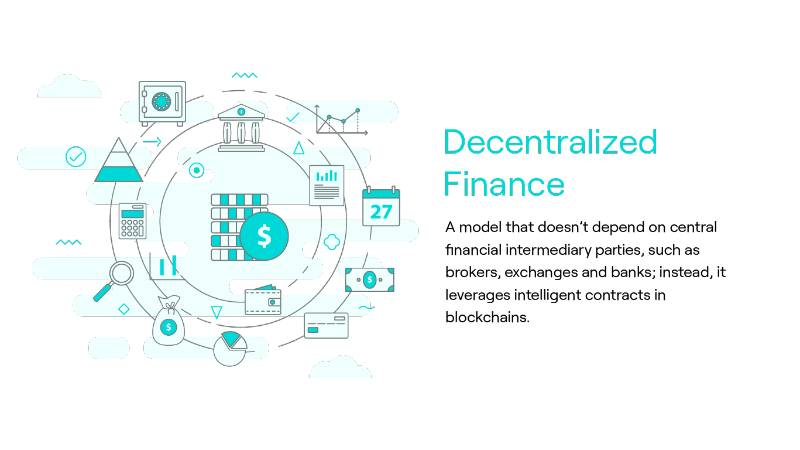DeFi: Decentralizing finance is the next step
![]() 10 minutes reading
10 minutes reading
Have you ever heard of DeFi? It is one of the hottest trends in the financial industry, and it is calling attention from different player profiles who are interested in this model’s potential. In this article, we’ll explain what DeFi is and how decentralized finance works so that you can understand the scenario more deeply.
There is no doubt, the payments industry and banking lives in a scenario of rapid transformation - and it is not today. In the last two decades, we have experienced the flexibility of the regulatory environment, the emergence of criptocurrency, the rapid explosion of digital banks.and the advances in instant payments and Open Finance, just to name a few developments.
And, in this context, one of the topics that’s most commonly seen as promising for driving more changes is decentralized finance, known as the acronym DeFi, which we’ll explain below. Check it out!
What is DeFi?



DeFi is the acronym for “decentralized finance”., which in Portuguese means “decentralized finance”.
And what is DeFi? The notion of decentralized finance is a broad one, but it is based on the intention to remove banks and other institutions from the equation. payment institutions that act as intermediaries in virtually all monetary exchanges: traditional financial transactions, loans, credit negotiation, financing, investments, creation and management of savings, contracting and paying off debts, among others.
In this sense, DeFi stands as an alternative to the entire traditional banking ecosystem, based on the CeFi model ("centralized finance", or "centralized finance") and which necessarily has the presence of a financial institution.
The idea behind DeFi, then, is to expand what the Bitcoin in started way back. In other words, it is not enough just to have digital currencies🇧🇷 It is necessary to create a completely digital solution that can stand up to banks and the traditional market.
How does decentralized finance work?
Now that we’ve defined DeFi, let’s take a look at how this financial model exactly works.
DeFi takes place within decentralized networks of Blockchain and with the help of so-called “dapps”: apps designed exclusively for decentralization. Currently, decentralized finance is taking place mainly in the Ethereum, which is still the most complete network in terms of crypto solutions.
This means that all DeFi transactions are negotiated in cryptoassets such as tokens, NFTs, cryptocurrencies or stablecoins.
While also being totally digital, DeFi conducts negotiations without traditional intermediary parties, such as banks. Thus, all transactions take place directly between the two interested parties via intelligent contracts (the so-called ‘smart contracts’, which are directly registered on Blockchain).
DeFi in 4 words
The concept of decentralized finance can also be described in four words:
Quick
Since transactions and negotiations don’t require an intermediary party to take place, they’re quicker and less bureaucratic. Also, DeFi doesn’t enforce limits for transactions. In practical terms, it means that you can transfer as much money as you want (as long as you actually have the amount), without the need to get previous approval from a bank.
Peer-to-peer
Everything happens in the “dapps”, so transactions do not go through a centralized banking system, if characterized as peer-to-peer.
Global
Since it is digital and leverages cryptoassets, DeFi allows transactions between people in different countries with no bureaucratic procedures.
Accessible
Anyone can join the decentralized finance industry, even without a banking account; you just need to have a digital wallet for crypto. Also, some DeFi initiatives are working with the idea of eliminating the need for identifying transactions. In practical terms, it means that you wouldn’t even need to provide your name, email or other personal details, ensuring confidentiality and security.
This all indicates that DeFi has plenty of potential to build a more accessible, less centralized and fairer financial market, not least because it would allow people to participate unbanked 🇧🇷 Thus, with decentralized finance, it may be possible to change the scenario even further. banking in Latin America and other regions.
Where can DeFi be applied?
If the notion of DeFi is still vague to you, it might be interesting to review some types of applications that can be explored within this financial universe. We’ve listed six of them below:
- Stablecoins: as a solution for those looking to invest in crypto in a more secure manner, stablecoins are digital currencies with values associated with traditional currencies, such as dollar or euro. They can be bought, sold and negotiated directly in DeFi.
- Insurance contracting: the insurance niche can able be quite profitable, especially if you can offer comprehensive services and intelligent solutions—which can be even more driven in countries where there are open insurance projects in place..
- Investment funds: you can invest in a variety of funds by relying on several cryptoassets, thus improving your profitability in your digital wallet.
- Loan solutions: like the insurance niche, loans can also show to be quite a profitable space within decentralized finance—especially because fees and interest rates are likely to be much lower than those in traditional banks.
- Crowdfunding for projects: considering the collaborative and communitarian nature in DeFi, it can be the ideal place to attract new investors in a crowdfunding project.
- Decentralized exchanges (DEX): holding the highest potential within DeFi applications, exchanges are digital brokers controlled by algorithms. By using them, users can negotiate cryptoassets directly among themselves, without the need for traditional intermediary parties such as banks.
Read also | Open Data: Is it the future for Open Finance?
A lot of room to grow: Questions about DeFi
The promising decentralized finance brings so many advantages and benefits, above all for people that still face obstacles to actively join the payment and banking industry.
However, there are many uncertainties and challenges along the way, not least because the cryptocurrency security is a topic that needs to be discussed in depth: the chances of fraudand, for example, they are still significant, as the whole scenario is new and complex for those who do not understand crypto in more depth.
Also, since it is a decentralized industry without intermediary parties, there is no regulatory agency capable of analyzing fraud cases to punish suspects and compensate those who were damaged.
Another question that persists—especially for Brazilians who are interested in getting to know DeFi and how to take part in it—involve filing income tax: how can people report gains in crypto, since the decentralized nature in DeFi doesn’t provide a report on them?
That is, while technology evolves and new DeFi projects advance, there are still points to consolidate, discuss and adjust so that its use can be democratized.
Read also | International remittance: what motivates the expansion of this financial service?
DeFi and the payment and banking industry: What can we expect in the future?
If decentralized finance eliminates the need for banks or other intermediary parties, is it possible to build some integration between DeFi and the banking industry?
Actually yes! Solutions already in progress such as the Crypto as a Service and projects like Digital Real can be the gateway for players interested in offering solutions in banking of cryptoassets with one foot in the Blockchain.
Also, it’s worth mentioning that DeFi is still a highly volatile and rather unpredictable environment; that’s why having players offering more protected assets has the potential to bring more users to DeFi.
Here at Dock, we’re keeping a close eye on all those movements so that our platform can keep up with key transformations in the industry.
See also: Webinar on what DeFi is
Still has some questions about what DeFi is and how this model works?
Check out the video below, in which Paulo Aragão, Field CTO of AWS, explains decentralized finance in minute detail during our agenda at FEBRABAN Tech 2022:
Takeaways: Decentralized finance
- DeFi is the acronym for ‘decentralized finance’: a project removing intermediary parties from virtually all types of financial transactions. In practical terms, it means eliminating banking and other institutions, making it easier for the two interested parties to make direct transactions and building a 100% digital solution.
- DeFi takes place in decentralized blockchain networks, with the help of the so-called ‘dapps’: apps exclusively designed for decentralization.
- All DeFi transactions are negotiated in cryptoassets such as tokens, NFTs, cryptocurrencies or stablecoins.
- Decentralized finance promises agility and accessibility: anyone can join the DeFi industry, even without a banking account. It only requires a digital wallet for crypto.
- Solutions such as Crypto as a Service can be the gateway for players looking to provide solutions in cryptoasset banking.
- DeFi is still new and creates a lot of uncertainties. Also, volatile cryptocurrencies also make investors insecure about it.
Related articles: